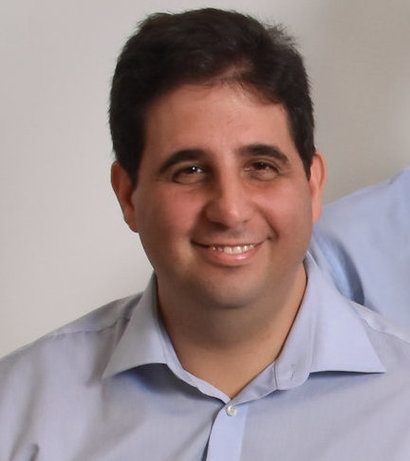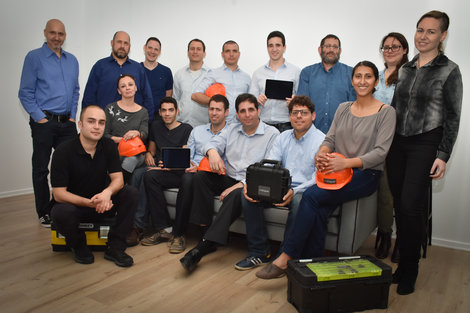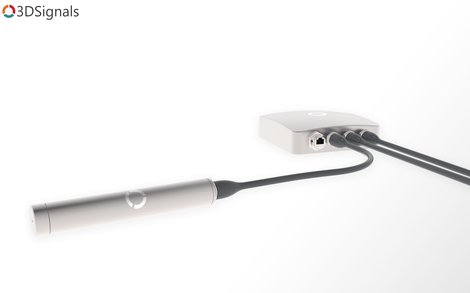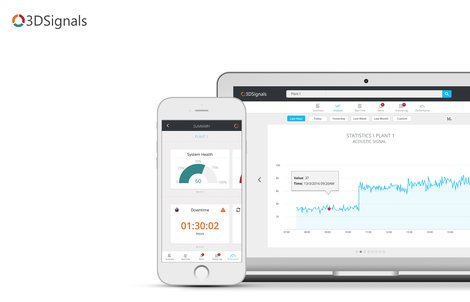
3DSignals has developed and provides industrial-grade airborne ultrasonic connected microphones that are placed next to a machine, such as a hydro-electric or wind turbine, and which transmit, in real time via a secure connection, the sounds emitted by that machine to a cloud environment. The audio signal is then analysed by a layer of deep learning algorithms which detects anomalies and classifies them. The resulting data can be accessed through a web app from any device, anytime and anywhere meaning that the sounds from machines can be heard and assessed by technicians without actually having to travel to the site concerned, as an aid to detecting when a particular asset is likely to fail. In essence, sound is now being used to implement predictive maintenance programmes.
3DSignals is already working with customers using this approach, including Enel Green Power, an Italian multinational renewable-energy corporation and subsidiary of the power generation firm Enel monitoring hydro-electric generators. The applications for this kind of technology cover industrial machines used in all kinds of sectors including renewables, in order to prevent costly downtime.
REM talked to Amnon Shenfield, Co-founder and CEO of 3DSignals to discuss this exciting new approach to maintenance of large mechanical systems.
Can you give me a rundown of predictive maintenance, what it is and what the main objective of it is?
There are two common strategies, one of these is ‘run to failure’, which essentially means that you wait until something fails and then you fix it and in case you have predictive maintenance or mobile maintenance teams running between different assets, even if you have one production floor with people going between the different assets and having responsibility to fix them, this would be the most basic strategy which has proven to be uneconomical in most cases but is still somehow very prevalent. This is because it’s very difficult to understand in a very complex mechanical environment what will break and for what reasons and when. This is the starting point.
The second strategy is preventive maintenance and that came up some 30-40 years ago, a lot to do with statistics. The MTBF or ‘meantime between failure’ – when will my machine break and due to what reasons? How can we produce statistical models that will give us some indication of when is the best time to fix the machine in order to avoid unexpected failure. If you think about cars, this is what we are doing to this day with our cars, where you need to take the car to the mechanic at 30,000 kilometres or one year. This is a schedule of preventive maintenance, supposedly set by statistics, or in the case of cars, mostly set by the economics of the service industry.
Even there, you get the sense that going to machines and fixing them according to some statistical model and schedule is not very good at catching unpredicted failures. There were some research by Emerson Process Control, actually two, one by Boeing in the late 60’s or 70’s, and one by Emerson Process Control more recently, and two research works that were major in that they surveyed a lot of production facilities. In the case of Boeing they surveyed a lot of aerospace systems and aeroplanes and the mechanical and electromechanical components involved with flight. They found out that over 50 percent of times when you go to preventive maintenance to fix the machine, it actually requires no maintenance. This causes over-maintenance, which is something that is very common in the world today where machines are actually fixed without needing any maintenance. This is the cause of a lot of waste in the economics of maintenance, although still a better technique that running to failure.
Sadly, it only catches about 20 percent of the failures that can be predicted statistically. So, 80 percent of the time, random problems will still occur and will catch you unprepared, forcing you to undertake unpredicted maintenance work.

The 3DSignals team
In recent decades, a final strategy has emerged – predictive maintenance based on real data coming from machines. This involves trying to apply what is called ‘condition-based maintenance’ or CDM. This applies just the right amount of maintenance at the right time, according to the actual condition of the machine rather than to statistics which in many ways is irrelevant to the condition of the machine, although it may be relevant to other machines in other environments. This predictive maintenance is the most preferred method to apply maintenance, because it is the most efficient. You don’t go into over-maintenance and you don’t spend so much on perishable components and also you avoid human mistakes - Emerson Process Control, for example, claimed 30 percent chance that the technician who is doing the maintenance will cause some problem in the machine being maintained.
However, although predictive maintenance is the preferred method, it is also the most challenging because even similar machines are different in the field. They have their own personalities, their own maintenance technicians to treat them, who treat them well, or not. They also have their own workloads and this really affects the potential of understand or developing a predictive maintenance model that can be applied for them. In the last five years or so there have been some new technological advances, the two most relevant being the prevalence of computer power in the cloud and the cost-effectiveness of computer power in the cloud – the IoT revolution – how to bring all this computer power to remote locations – also with software, adaptive learning models that can be applied with massive amounts of data, in order to understand better and very deeply, all the various factors that impact the condition of machines in order to develop strong and accurate prediction models. These are very new developments that are now influencing a new era in maintenance strategies.
There are many data collection methods, including acoustics which require training the neural networks in a technician’s brain to understand the variety of signals in the field and then punch them into some computational software that mixes with his own understanding and experience to produce at least some level of prediction of condition. This is something which has been done for the last couple of decades, but now it can be automated as part of IoT systems and learning systems and so on so that we get a much higher resolution of data and we don’t have to send people out to collect measurements sporadically and we don’t rely on the experience of particular technicians and engineers. In order to gain insights, we are much more able to aggregate data in a central place which will produce models of much higher quality.
What kind of markets are there for this? How many countries around the world are taking this approach now?
I think everyone. I think we are in the midst of a revolution. In Europe it is probably Industry 4.0, which claims that we are now in the fourth industrial revolution, following steam, electricity and then computers. The fourth is when we get IoT and deep learning and so on. Predictive maintenance is a part of this. In the US it’s called ‘smart factories’ more than Industry 4.0, but these are just marketing terms that have caught on.
We see it from the perspective of the quality of data. It’s a very complex task today, looking at the quality of machines and trying to work out when they are rendering interesting data that indicates something interesting is happening to these machines in terms of failure or some maintenance activity that needs to take place, and also what data is missing. The classical approach to maintenance is collecting signals like temperature, pressure, vibration, oil quality and so on. These are the classic sampling models that have been used for many years, but it’s very difficult to produce a strong predictive maintenance model without actually having the history, the event history of the machine, in parallel to all this data it generates. This is a huge challenge because if you think of software and IT systems, maintenance management usually sits on one piece of software, operational parameters sit on a completely separate system, customer orders on another system, and it’s very difficult to merge all this data together to understand what a machine is doing, how it affects its lifespan and condition and what sort of maintenance it requires in order to achieve reliability. The challenge is how to merge all this data together from different software systems, and in some cases from different hardware systems, different sensors and different controllers, different control networks and so on. It’s a very fragmented world.

When 3D Signals approached this, we tried to figure out whether there is some holistic approach that can help us sense an entire machine or even a collection of machines and involved in a process, with as few sensors as possible, and merge as much data as we can through these sensors in order to understand what the machines are doing in parallel with data about what maintenance activity is taking place so that we can train learning algorithms quickly how to recognise failure in industrial processes and machines.
We figured out something very interesting – sound is being under-utilised. All the various technicians understand what is going on with their machines when they walk into a production floor and just listen – all the pumps and electrical motors and valves and turbines, generators and compressors and so on, they are all very acoustic. When you walk around them, you get a sense, as with your car, whether they sound normal or not. We use this human sense very often, but there is no automated system tracking the same signal. This very human signal is not being utilised in electronics or computer mechanics or monitoring systems. There is a beautiful advantage there in that sound in the air is coming from several systems at once. This means that with very few sound sensors or microphones you can pick up the acoustic behaviour of a whole bunch of machines, even track complex processes.
For example, we monitor hydro power stations for the Italian power company Enel. They have very complex processes where one power generation unit sounds like one machine when in fact it’s a large collection of machines – generator, a lot of bearings, a lot of peripheral systems, electrical motors, hydraulic systems and valves and so on. If you ask yourself, with IoT, how many sensors are needed to get the full picture of process flow and condition, then you end up with hundreds and hundreds of sensors. However, in this specific example, we monitor systems with less than 20 sensors per plant. This is something that is quite unique because we are looking at a new signal here – sound.
This has not been used before for this application of condition monitoring and predictive maintenance. The approach combines the signals coming from many different machines and also the relationship between them where we catch signals indicating failures between other sensors or failures related to the process and not necessarily a single machine. In some cases, tracking the activity of a pump, you may notice that the frequency of its activity is rising, indicating its failure to generate a required pressure because of a leak somewhere. The pump itself is perfect, it’s just that it’s working more. So you’re tracking a piece of equipment where the signal doesn’t mean it has a problem but delivers information about the health of the process. This is a unique approach which we’re basing on this new signal. Sound.
We have this thesis which states that machines, as they deteriorate, produce different sounds. We went to many engineers and asked the question – “Can you hear if a machine is about to fail?” We got a resonating yes everywhere we asked this question. We went out to companies and told them we are trying to build software that has the capacity to understand sound coming from machines. We started working in the steel industry and very quickly acquired a lot of insights regarding the efficiency, productivity and condition of the different machines involved in the production line of steel products. Soon after that, we were approached by Enel Green Power asking whether this can be applied to power generation, in wind power, hydro power and so on. We said that we think so, that we had never done this before but we were happy to try. Soon after, we had some interesting results from our sensors, in that the number of sensors required was much, much smaller than any other sensor technology.

We ended up developing and patenting a whole family of algorithms looking at the sounds coming from industrial machinery, identifying anomalies in the sound, tracking specific signatures of specific types of failure and building databases of the sound signatures of various types of problems in industrial machines, as well as very strong anomaly detection algorithms that could identify and compare between similar machines.
A very nice benefit of acoustics is that unlike other signals, we can take an acoustic signal and present it to an expert, who can be the person designing the machine or building or maintaining it or so on, and ask the very simple question “do you know what this is?” In very many cases, the reply would be “of course, this is a blocked filter” or a misaligned shaft or bearing failure or incorrect configuration. This information helps us to label the behaviours of the machines we are monitoring, based on something that is very intuitive and human. When you compare this to other signals, vibration, temperature and so on, if you show a vibration graph to a technician, he may be able to tell you that the machine is vibrating too much but it’s very difficult for him to say why. It’s much easier to say “listen to this, what is this?” and get a very straight answer regarding what is going on.
Which renewable energy technologies are you applying this to?
We’re very excited to be working with Enel in hydro parklands and a company in Spain. Enel also has some parklands in the US, so we’ll be monitoring some hydro plants there as well. In addition to that of course there is also wind, which is another great example of remote assets which are rarely visited by humans for other purposes than maintenance and where the data is very difficult to understand. These are large systems, large generators, large bearings and large gearboxes and so on. Very acoustic in their behaviour. You can tell a lot about the condition of the blade in a wind turbine by the sound it makes as it cuts through the air. This is very well known, not something that we’ve invented. Some of the people that maintain these wind turbines already have the expertise, they don’t even have to climb up, they just listen and they know what’s happening to the turbine and to the gearbox, the bearings and the generator and so on. We have an ongoing 24/7 process with an automated monitoring system that will give an alert if something goes out of the ordinary.
We are also working with concentrated solar power (CSP) plants, solar thermal plants, with regard to the pumps etc. Even in pure solar generation you have motors [in the tracking systems] that move the solar panels around, cooling systems for the power banks and switchgear and so on. All this equipment, which is electromechanical in nature, should be monitored for predictive maintenance. There is, by the way, a lot of damage that can happen where you have cooling equipment that is failing. In many such cases, you need to shut off entire systems. So there is a lot of interest in moving to predictive maintenance. This industry is really no different to any other industry that uses machines.
Where do you think this is going in the future?
I would love to see this become another standard alongside the other approaches on offer. I think there should be a very clear message that this is a cost-effective method of gathering a lot of information regarding the condition of machines very easily. With sound, you don’t have to touch the machines, you don’t have to connect to anything and so on. I expect to see this happening within the next couple of years because there is a lot of action at the moment with monitoring, and many large companies are now looking into sound and developing assets to understand the sound coming from their machines. In the longer term, I think the technology will become miniaturised so that it becomes a default part of any machine, including cars and consumer devices and so on.
For additional information:

